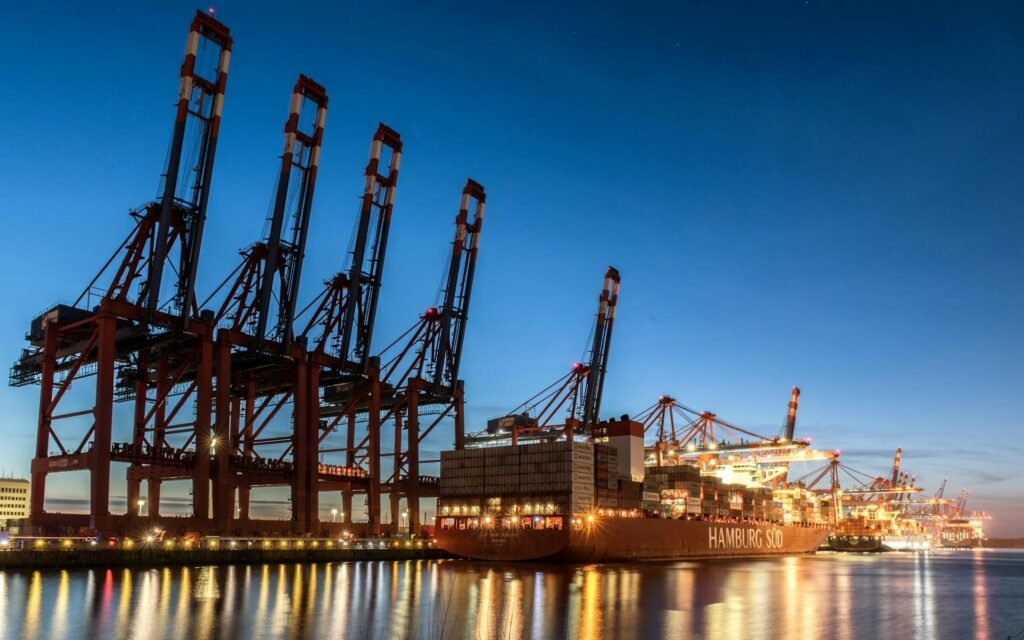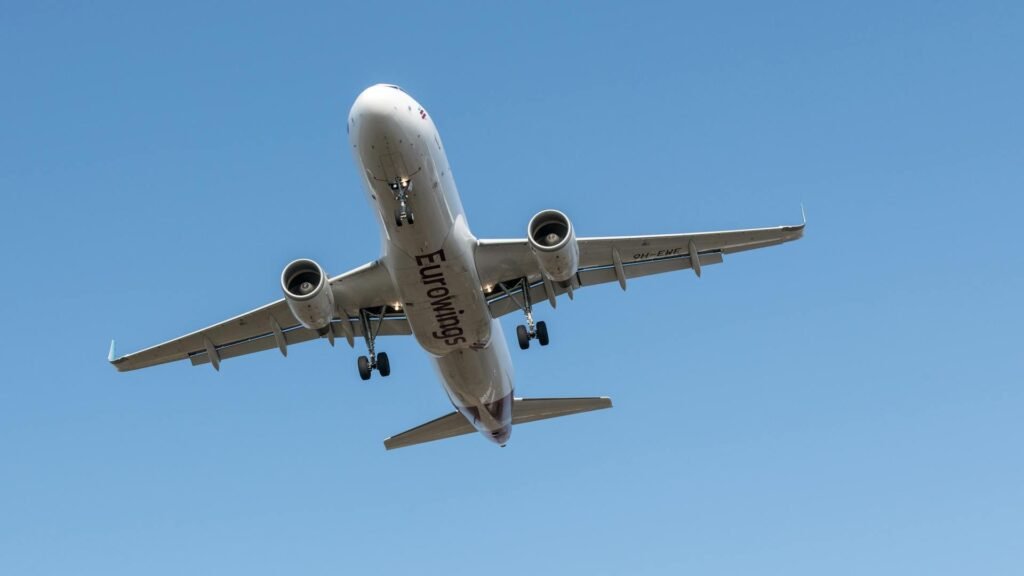
1. Introduction
“75% of global trade depends on efficient international freight shipping.” International freight shipping refers to the multimodal transport of goods across national borders. It encompasses various modes such as air, sea, and land, working in harmony to move products from one corner of the world to another. The purpose of this guide is to simplify the strategies for air, sea, and land freight in 2025, enabling businesses and individuals to navigate the complex world of international trade with ease. With the increasing globalization of markets, understanding international freight shipping has become more crucial than ever.
2. Why International Freight Matters
Impact on Supply Chains
International freight shipping plays a pivotal role in global supply chains. It enables access to 95% of world markets, allowing businesses to source raw materials from different regions and distribute their products globally. This access to a wide range of markets enhances competition, drives innovation, and ultimately benefits consumers. For example, a small manufacturing company in a developing country can now source high – quality components from a supplier in a developed nation, thanks to efficient international freight services.
Key Industries Reliant on Freight
Several key industries are highly reliant on international freight shipping. Manufacturing, for instance, depends on the timely delivery of raw materials and the distribution of finished products. E – commerce has also boomed in recent years, and international freight is essential for delivering products to customers around the world. Retailers rely on freight to stock their stores with a diverse range of products. According to Statista, the global freight market is expected to hit $12T by 2027, highlighting the significant growth and importance of this sector.

3. Modes of International Freight
A. Ocean Freight
Ocean freight is best suited for high – volume, non – urgent shipments. It offers cost – effective solutions for transporting large quantities of goods over long distances. There are two main types of ocean freight: Full Container Load (FCL) and Less than Container Load (LCL). FCL is ideal for shippers with enough goods to fill an entire container, providing exclusivity and potentially faster transit times. LCL, on the other hand, is suitable for smaller shipments, allowing shippers to share the cost of a container. Container shipping is a common method in ocean freight, with standardized containers making it easier to handle and transfer goods between different modes of transport.
B. Air Freight
Air freight is the preferred choice for urgent, high – value goods. It offers fast transit times, which is crucial for products with a short shelf – life or those that need to reach the market quickly. Air cargo rates can vary depending on factors such as the weight, volume, and destination of the shipment. Express shipping services are also available, providing even faster delivery options. However, air freight is generally more expensive than ocean freight, making it less suitable for large – volume, low – value shipments.
C. Land Freight
Land freight, including truck and rail transportation, is commonly used for regional corridors. In regions like the EU and ASEAN, well – developed road and rail networks facilitate the movement of goods between neighboring countries. Trucks offer flexibility in terms of pick – up and delivery locations, while rail is more suitable for large – volume, long – distance shipments.
| Mode of Freight | Cost | Speed | Capacity |
|---|---|---|---|
| Ocean Freight | Low (per unit for large volumes) | Slow | High |
| Air Freight | High | Fast | Low to Medium |
| Land Freight (Truck) | Medium | Medium | Low to Medium |
| Land Freight (Rail) | Medium | Medium | High |
4. Key Steps in International Shipping
Quoting & Booking
When it comes to international shipping, quoting and booking are the initial steps. Incoterms® 2024 play a crucial role in defining the responsibilities of the buyer and the seller in the shipping process. For example, EXW (Ex Works) means the seller makes the goods available at their premises, and the buyer is responsible for all subsequent transportation and costs. FOB (Free on Board) places the responsibility of loading the goods onto the vessel on the seller, while DDP (Delivered Duty Paid) means the seller is responsible for delivering the goods to the buyer’s specified location, including paying all duties and taxes.
Packaging & Labeling
Proper packaging and labeling are essential for international shipping. The ISPM – 15 wood standards regulate the treatment of wooden packaging materials to prevent the spread of pests. Hazardous material rules ensure the safe transportation of dangerous goods. Labels should clearly indicate the contents, handling instructions, and destination of the shipment.
Customs Clearance
Customs clearance is a critical step in international shipping. Essential documents include the commercial invoice, which declares the value of the goods for customs purposes; the packing list, which details the contents of the shipment; and the Certificate of Origin (COO), which indicates the country where the goods were produced. A customs brokerage can assist in navigating the complex customs regulations of different countries.
Tracking & Delivery
With the advancement of technology, IoT (Internet of Things) and blockchain are being used to provide real – time visibility of shipments. Shippers and consignees can track the location, status, and condition of their goods throughout the shipping process, ensuring better control and planning.
5. Cost Factors & Optimization
Pricing Variables
Several factors influence the cost of international freight shipping. Fuel surcharges are adjusted based on the fluctuating price of fuel. Currency adjustments take into account the exchange rate between different currencies. Peak season fees are applied during periods of high demand, such as the holiday season. Duties and taxes are also significant cost factors, and the HS (Harmonized System) code of the goods determines the applicable rates.
Cost – Saving Tips
To optimize costs, shippers can consolidate LCL shipments to reduce per – unit costs. Optimizing packaging can also lead to savings by reducing the volume and weight of the shipment. Utilizing free trade agreements, such as the USMCA (United States – Mexico – Canada Agreement) and RCEP (Regional Comprehensive Economic Partnership), can help reduce or eliminate duties on eligible goods.

6. Critical Documents
Checklist
There are several critical documents required for international freight shipping. The Air Waybill (AWB) is used for air freight and serves as a contract between the shipper and the carrier. The Bill of Lading (B/L) is essential for ocean freight, acting as a receipt for the goods and a contract of carriage. The commercial invoice provides details about the value of the goods, and the insurance certificate protects the goods against loss or damage during transit. Import/Export Licenses may be required depending on the nature of the goods and the regulations of the countries involved. A pro tip is that using digital documents can reduce clearance time by 65%.
7. Choosing a Freight Forwarder
5 Selection Criteria
Network Coverage
A good freight forwarder should have a wide network coverage, with access to key trade lanes. This ensures that they can handle shipments to and from various parts of the world efficiently.
Compliance Expertise
Compliance with international regulations is crucial. A freight forwarder should have in – depth knowledge of regulations such as FDA (Food and Drug Administration) in the United States and REACH (Registration, Evaluation, Authorization and Restriction of Chemicals) in the EU.
Technology
The use of technology is becoming increasingly important in the freight industry. A forwarder with API integrations and predictive analytics capabilities can provide better visibility and more accurate shipping schedules.
Sustainability
With the growing concern for the environment, many businesses are looking for freight forwarders with sustainability initiatives. Carbon – neutral options, such as using alternative fuels or offsetting carbon emissions, are becoming more popular.
Crisis Management
The ability to manage crises is essential for a freight forwarder. For example, during the Red Sea disruptions, a forwarder should be able to find alternative routes and solutions to minimize the impact on shipments. It is important to avoid forwarders without IATA (International Air Transport Association) or FMC (Federal Maritime Commission) licensing.
8. Overcoming Shipping Challenges
Top 2024 Risks
Geopolitical Conflicts
Geopolitical conflicts can disrupt international freight shipping. To mitigate this risk, route diversification is a viable strategy. Shippers can explore alternative routes to avoid areas affected by conflicts.
Port Congestion
Port congestion can cause significant delays in shipping. To account for this, it is advisable to buffer an additional 25% of transit time in the shipping schedule.
Regulatory Changes
Regulatory changes in different countries can pose challenges for shippers. Partnering with local brokers who are familiar with the local regulations can help navigate these changes.
Solution Toolkit
Cargo insurance provides financial protection against loss or damage to the goods during transit. Predictive delay analytics can help shippers anticipate potential delays and take proactive measures.
9. Future Trends
AI & Automation
AI and automation are expected to transform the international freight shipping industry. Predictive routing can optimize shipping routes based on factors such as weather, traffic, and port congestion. Smart warehouses equipped with automated systems can improve the efficiency of inventory management and order fulfillment.
Green Logistics
The International Maritime Organization (IMO) has set targets for reducing emissions in the shipping industry by 2030. The use of Sustainable Aviation Fuel (SAF) in air freight is also on the rise, as the industry aims to become more environmentally friendly.
E – commerce Impact
The growth of e – commerce has had a significant impact on international freight shipping. Last – mile innovation for cross – border B2C (Business to Consumer) shipments is becoming increasingly important, with new delivery models and technologies being developed to meet the demands of online shoppers.
10. Conclusion
International freight shipping is the engine of globalization, balancing cost, speed, and reliability. In 2024 and beyond, understanding the different modes of freight, the key steps in shipping, and the factors influencing costs is essential for businesses and individuals involved in global trade. By leveraging the latest technologies, choosing the right freight forwarder, and being prepared to overcome challenges, shippers can optimize their cross – border logistics and thrive in the competitive global market.





